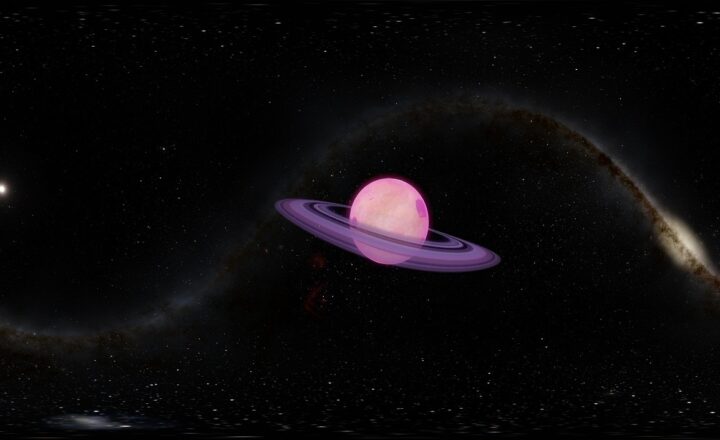The Most Earth-Like Exoplanets Discovered So Far and Why They Fascinate Us
November 12, 2024

The quest for finding Earth-like exoplanets has captivated astronomers for decades. The discovery of exoplanets—planets that orbit stars outside our solar system—opens the door to fundamental questions about our place in the universe. Among these celestial bodies, those that closely resemble Earth in terms of size, composition, and distance from their respective stars are particularly intriguing. This article delves into some of the most promising Earth-like exoplanets discovered so far, their unique characteristics, and the science behind our fascination with them.
1. Understanding Exoplanets: A Brief Overview
Exoplanets can be classified into several categories based on their physical characteristics and their distance from their stars:
- Terrestrial Planets: These are rocky planets, similar to Earth, and include both Earth-like and super-Earth classifications.
- Gas Giants: These planets are massive and primarily composed of hydrogen and helium, resembling Jupiter and Saturn in our solar system.
- Ice Giants: Similar to gas giants but with more water, ammonia, and methane; Uranus and Neptune are examples.
Concerning location, the habitable zone, or Goldilocks zone, is the region around a star where conditions are just right for liquid water to exist—essential for life as we know it. The combination of size, temperature, and distance from the star plays a crucial role in determining a planet’s potential habitability.
2. The Most Promising Earth-Like Exoplanets
Based on years of astronomical research, several exoplanets stand out for their Earth-like qualities:
2.1 Proxima Centauri b
Discovered in 2016, Proxima Centauri b is located approximately 4.24 light-years away from Earth and orbits the red dwarf star Proxima Centauri. This exoplanet lies within its star’s habitable zone, making it a prime candidate for finding extraterrestrial life. Proxima b is roughly 1.17 times the diameter of Earth, leading scientists to speculate on its potential atmosphere and surface conditions.
2.2 Kepler-186f
Kepler-186f was the first Earth-sized planet found in the habitable zone of another star and is located about 500 light-years from Earth. With a size nearly similar to Earth, Kepler-186f orbits a cooler star, which may lead to the presence of liquid water on its surface. It inspires hope that conditions suitable for life may exist elsewhere in the universe.
2.3 Trappist-1 System
A remarkable discovery was made with the Trappist-1 system, which hosts seven Earth-sized planets, three of which are located in the habitable zone. Trappist-1 is about 40 light-years away from us, and its planets are all potentially suitable for life. The compact nature of this system raises interesting questions about planetary interactions and the potential for life.
2.4 LHS 1140 b
LHS 1140 b is a super-Earth located about 40 light-years away. It’s about 1.4 times the size of Earth and lies within the habitable zone of a red dwarf star. This exoplanet has garnered interest due to its accessibility for atmospheric studies, which could reveal vital information about its potential for supporting life.
3. The Science Behind the Fascination
The fascination with Earth-like exoplanets goes beyond mere curiosity; it encompasses profound scientific inquiries about life beyond Earth:
- Astrobiology: The search for life on other planets leads to exploring conditions required for life. Each discovery of an Earth-like exoplanet helps refine our understanding of habitability.
- Planetary Formation: Studying these planets provides insight into how planetary systems evolve. Distinctions between Earth and super-Earth compositions inform theories about planet formation.
- Cosmic Perspective: Discovering potentially habitable worlds influences our understanding of our place in the universe, prompting questions about whether we are alone and the diversity of life’s possibilities beyond Earth.
4. Challenges in Studying Exoplanets
While the discovery of Earth-like exoplanets is exciting, several challenges persist:
- Distance: Most exoplanets are incredibly far away, making direct study of their atmospheres and surfaces difficult with current technology.
- Technical Limitations: Most observations rely on transit method or radial velocity measurements. Newer technologies, like space telescopes, are critical for advanced studies but involve significant investment and development time.
- Limited Understanding of Exoplanet Atmospheres: While we can infer the presence of atmospheres, understanding their composition is challenging. Finding biosignatures, indicative of life, requires precise measurement that often falls beyond current capabilities.
5. Future Prospects in Exoplanet Research
The future of exoplanet research looks promising. Upcoming space missions like the James Webb Space Telescope (JWST) promise to revolutionize our understanding of exoplanets. It will allow scientists to analyze the atmospheres of distant worlds, searching for chemicals indicative of life.
Ongoing improvements in ground-based telescopes and observation methods will further enhance our capability to discover and study exoplanets, expanding our catalog of potentially habitable worlds amidst the stars.
Conclusion
The most Earth-like exoplanets discovered thus far paint a fascinating picture of the potential for life beyond our solar system. As astronomers continue to uncover more about these distant worlds, we take steps closer to answering the most profound question of all: are we alone in the universe? The ongoing quest not only pushes the boundaries of knowledge but also invites us to consider the marvelous possibilities of life in the cosmos.







